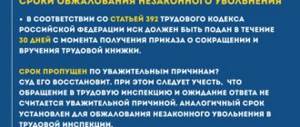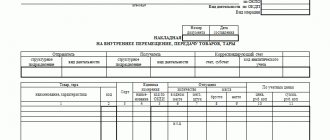What laws govern pricing?
The main legal guarantors of the buyer’s interests and defenders from unscrupulous sellers are the Federal Law “On the Protection of Buyer’s Rights” and the Civil Code of the Russian Federation.
Civil Code of the Russian Federation
Articles 426 and 492 of the Civil Code of the Russian Federation classify the retail sale of consumer goods as public contracts - agreements with an indefinite number of persons. According to the same code, any public organization that sells goods and offers services to the public must:
- establish a uniform price for all buyers/consumers (except for those who are legally entitled to benefits);
- conclude an agreement with everyone who wishes;
- When drawing up contracts, do not give any preference to anyone.
Important: the display of goods at a certain price in the sales area, on display cases, racks and other places of sale is nothing more than a public offer - that is, an offer to a potential buyer to conclude an agreement. Except for the cases specified in Article 494 of the Civil Code of the Russian Federation, when the seller clearly indicates that a particular product is not for sale.
The law obliges any seller to provide reliable information regarding the item of trade (product). And if the information the buyer needs is not communicated, the seller is obliged to compensate for losses incurred in connection with this (Article 495 of the Civil Code of the Russian Federation). That is, at a minimum, return the cost of the goods if the contract has already been concluded (and the stamped cash receipt indicates exactly this).
Law on Consumer Protection"
The seller must also provide reliable information about the goods being sold according to the Law “On the Protection of Consumer Rights” (Article 10). There is a whole information list published there, which the seller must adhere to. Any trading structure bears responsibility for violation of consumer rights.
The legislation also provides for deadlines within which the seller must satisfy the buyer’s legal requirements. So, for example, a reduction in product value, a refund and compensation for losses incurred due to the provision of false information - all this must be satisfied no later than 10 days after the presentation of consumer demands, in accordance with Article 22 of the Federal Law of the Russian Federation.
The law (Article 12 of the Federal Law of the Russian Federation) also provides for compensation for damages for refusal (illegal, of course) from the sale of goods. And also a refund plus compensation for losses if the purchased product is returned. And when such issues are resolved in court, the buyer may also be compensated for moral damages (Article 15 of the Federal Law of the Russian Federation).
Regulations of the law on consumer protection
The discrepancy between the price on the receipt and the price tag violates several Russian laws.
Civil Code
Article 495 of the Civil Code requires sellers to provide consumers with reliable information about what the store sells. If a consumer who has received incorrect information has already concluded a retail contract with a trading organization, he has the right to refuse to fulfill it and return the amount paid for the purchase. According to Article 493 of the Civil Code, issuing a sales or cash receipt to a consumer is equivalent to concluding such an agreement.
Consumer Rights Law
Law No. 2300-1 on the protection of consumer rights is the main legal document, which is violated by the discrepancy between the price indicated on the price tag and on the receipt at the cash register.
Article 10 of this law, like the Civil Code, obliges the store to inform the buyer about the accurate price of the product. The price tag must indicate the full amount of money to be paid.
Article 12 places responsibility for incorrect information about the goods on the seller. It also allows the consumer not to fulfill the purchase and sale agreement if its conclusion was based on unreliable information about the characteristics of the purchase (including its price).
Finally, Article 22 specifies the period within which the buyer must return money for goods in relation to which false information was given. It is 10 days. Although conscientious sellers usually solve the problem “on the spot”, paying the defrauded consumer on the same day.
Trading Rules
The general provisions of the Trade Rules (clause 19) state that the seller is obliged to issue reliable, legible and uniform price tags. In accordance with Article 494 of the Civil Code, they are a public offer, that is, a purchase and sale agreement concluded by a store with an indefinite number of persons (with all buyers who wish to buy the product for which the price tag is issued).
Price is an essential condition of such an agreement, and the seller must sell goods at a publicly stated value (indicated on the price tag).
What does a consumer have a right to?
Having noticed a discrepancy between the price in the price tag and the receipt, the buyer has the right to demand:
- return the money paid to him in full if the purchase has already taken place (the product is returned to the store);
- sell him the goods for the price indicated in the existing price tag.
If store employees do not voluntarily agree to any of these actions, the consumer has several ways to force them to comply with the law.
Rules for the sale of certain types of goods
The rules for the sale of goods are regulated in Government Decree No. 55. And it clearly states:
- requirements for information provided to customers;
- availability of price tags, as well as requirements for the volume and reliability of information displayed on them;
- nuances of the sale of certain goods.
According to paragraph 11 of the above-mentioned Resolution, the seller must convey the price of the product to the buyer in an accessible and visual form. In addition, the price should be the same for all buyers (with the exception of those with official benefits). And in addition to the actual cost, the price tags must also indicate the name and type of product.
At each retail outlet there should be a “Book of Complaints and Suggestions” that is freely available (as stated in paragraph 8 of the Trade Rules). Or it must be presented upon the buyer’s first request.
What do you have the right to demand if prices on price tags and receipts do not match?
If the buyer discovers that the price of the product printed on the receipt does not correspond to what was indicated on the price tag, he can:
- Demand that the selected product be sold to him at the price indicated on the price tag.
- Return the purchased product, demanding not only compensation for its cost, but also for losses caused by incorrect information.
Important: if we talk about the losses that a buyer may incur as a result of divergent information on the receipt and the price tag, the most striking example would be a consumer or trade loan issued in connection with a specific purchase. Namely, interest plus commissions associated with additional banking services. In addition, transportation costs incurred during delivery of the goods, as well as the cost of related products, are considered losses.
As for the sale of a specific product name at the declared value (the price indicated on the price tag), such an obligation arises from the seller due to the impossibility of refusing a public agreement (offer), arising from Article 426 of the Civil Code of the Russian Federation, where the price of the product is called an essential condition.
Problems with price tags
No law provides for strict criteria for the design of price tags. A price tag is a symbol that describes the main properties of a product. Depending on the imagination and corporate style of the store, price tags can be presented on paper or electronic media
, and can also be placed
on a stand or written on a slate board
.
Depending on the type of product sold, the price tag must indicate:
- for clothing: name of the store, country of origin, price per unit, material used to produce the product, date of the price tag;
- for food products: name of the store, name of the product, product code, its grade, product composition, volume, price per unit, if the product is by weight then the cost depending on the number of grams, expiration date, date of manufacture and signature of the person responsible for sorting;
- for non-food products: name of the store and product, its characteristics, country of origin, price per unit;
- medicines: name of the drug, pharmacological properties, country of manufacture, shelf life of the product and date of the price tag, cost of the drug.
If inconsistencies are identified, an entrepreneur engaged in dishonest and unscrupulous activities may be subject to administrative liability. There may be several options for incorrect price tags.
Price discrepancy between the price tag and the receipt
This situation is familiar to many, especially if they buy goods in large supermarkets, where products can be revalued several times a day.
. As a rule, the merchandiser receives a letter with new price tags, they are printed out and within a few hours, if there are a lot of overpriced goods, the price tags are displayed on the sales floor. The likelihood that you will decide to buy this particular product before the price tags change is high. If the price becomes lower than indicated on the price tag, customers will be pleasantly surprised and will not demand to purchase at the old price. But if the price becomes higher, then a conflict is inevitable, especially if the price increase is significant.
In this case, the law is on the side of consumers. Thus, Articles 426 and 429 of the Civil Code, as well as Article 10 of the PZPP, provide for rules according to which the seller must promptly provide information about the real cost of goods, and if a discrepancy is identified, reimburse the client for his forced overpayment.
For example, the old price for winter boots was 4,500 rubles, and after the price increase it was 5,500 rubles. Therefore, if the seller did not replace the price tag in a timely manner, then the client has the right to demand the purchase of boots at the price indicated on the price tag
.
In case of refusal to sell the goods at the previously specified price, the client can take a photograph of the goods with the previously established price, leave a negative entry in the complaint book and report to Rospotrebnadzor
and even file a lawsuit, which may oblige the store to sell the product at the price stated by the buyer in the application.
The price tag does not match the product
Due to the inattention and haste of sellers, the client may observe a discrepancy between the price tag and the product offered under it. For example, the price tag says “bread”, and the product offered in the window is sausage. Of course, following the rule suggested above, the client may want to buy sausage at the price indicated for bread. But here it is worth considering the fact of substitution
. Thus, unscrupulous customers can independently replace the price tag, wanting to receive the product at the lowest price, appealing with the same right to buy the product at the price indicated on the price tag.
In this case, the law will be on the seller's side
. According to Article 432 of the Civil Code, the sale of goods is carried out if an agreement is reached between the parties on all the terms of the contract. This means that a mandatory condition of the contract is an object that acts as a commodity. Consequently, in order to avoid a conflict of interest, the price tag should indicate not only the price, but also the name of the product.
According to the rules, the client can be indignant about the incorrectness of the price tags, and even demand a book of complaints in which he will reflect his dissatisfaction with misleading him about the indicated price, but he will not be able to buy the product at the price of a different price tag.
Procedure for detecting price discrepancies on price tags and receipts in a store
The actions of a buyer who wants to protect his rights and their sequence directly depend on the actions of a particular seller (trade organization).
Collection of evidence
Any official claim is possible if there is evidence . Therefore, before making claims to the seller, you need to collect evidence of existing violations. Namely: keep the cash receipt and record (for example, take a photo on your phone) the price indicated on the price tag so that their discrepancy is documented. To make it even more convincing, you can photograph the price tag and receipt next to each other, or indicate the date and time on separate photographs.
When a camera or phone with a camera is not at hand, witnesses to what is happening can help. You just need to take their contact information and obtain consent to testify.
Presentation of demands
The fastest way, of course, is to resolve the issue immediately on the spot. The buyer makes a claim to the cashier regarding the discrepancy between the price in the receipt and on the price tag, and he invites the administrator or director of the store to resolve the issue (since he himself is not authorized to resolve monetary disputes and issues).
If the invited official is “savvy” in matters of law in his field, he will not aggravate the situation and resolve the conflict legally (return the buyer’s money or sell the goods at the price indicated on the price tag), as they say, “here, now.”
Important: references to “new” receipts, revaluation and other circumstances have no meaning. The trading organization (seller) is obliged to carry out its activities in strict accordance with the requirements of current legislation and its internal problems should not worry any of the buyers.
If an employee of the selling company refused to fulfill the buyer’s demands expressed orally, they must be duplicated in writing - in a book of complaints and suggestions, clearly stating the situation. There you also need to indicate contact information and indicate the deadline for considering the case and making a decision. The designation of the period should be based on those 10 days that are specified in Article 22 of the Federal Law of the Russian Federation (for reimbursement of costs, as well as losses).
The second option is to write a complaint on a separate piece of paper addressed to the administration and/or store owners. It would be more correct - in 2 copies, so that the second one - with a mark of acceptance - can be kept. If the provision of a complaint book or acceptance of an application was refused, you should complain to the relevant regulatory authorities.
Sale of low-quality or expired goods
Every citizen has the right to purchase quality goods that will not cause harm to his body. Monitoring expiration dates and selling fresh food is the core business of any grocery store. By offering customers expired goods, the seller violates many regulatory sanitary and epidemiological rules
and normal. The right to quality goods is regulated by Article 7 of the PPL.
If the buyer purchased an expired product or a product of poor quality, he has the right to use Article 18 of the above law and return it to the seller, receiving his money back. The seller is obliged to pick up the goods, even if the client does not have a receipt; this right is regulated by Article 25 of the law. If the seller shows disbelief that you bought an expired item from him, the buyer may require studying the video materials to confirm his purchase.
If the grocery store is small and they do not have their own price tags that will help identify the product purchased from them, but the consumer is sure that the low-quality product was purchased in this store, then a complaint is filed with Rospotrebnadzor
or to the consumer protection service.
Who should I complain to?
There are several instances for complaints against negligent sellers who refuse to provide a book of complaints and suggestions, as well as those who do not want to satisfy legitimate consumer demands regarding the discrepancy between the price in the receipt and on the price tag:
- Rospotrebnadzor;
- local administration;
- police;
- and finally the prosecutor's office.
And if you need detailed advice on what, to whom and how to write, then it can be obtained from local public consumer organizations.
One of the most effective measures in such situations is a complaint filed with the territorial Rospotrebnadzor. After all, it is this body that directly controls the observance of consumer rights (under Article 40 of the Federal Law on the Protection of Consumer Rights). As soon as a complaint is received by this organization, an inspection will be immediately initiated, an order will be drawn up and a fine will be issued to the offending seller.
By the way, many branches of Rospotrebnadzor operate hotlines. And you can call there directly from the store.
As for the prosecutor's office, local authorities and supervisory services, their representatives can defend consumer interests in the courts.
Application requirements
When contacting government agencies, the buyer should be aware that there are a number of legal requirements for such requests. These requirements are spelled out in Article 7 of the Federal Law “On the procedure for considering appeals from citizens of the Russian Federation .” Such statements must contain:
- Full official name of the recipient authority.
- Full name of the authorized person or official to whom the appeal is sent.
- Full name of the applicant.
- Address for sending the response (you can specify postal or email).
- A detailed description of the essence of the appeal.
- Applicant's signature and date.
You can download a standard sample application to Rospotrebnadzor here.
Important: anonymous applications to government agencies will not be considered. And a package of documents and evidence must also be attached to the complaint. This could be a photo of the receipt and price tag (general or separate); recordings of negotiations with representatives of the seller; response to a complaint addressed to the administration of a retail outlet, etc.
The law gives the government body 30 days to respond to citizens’ appeals.









